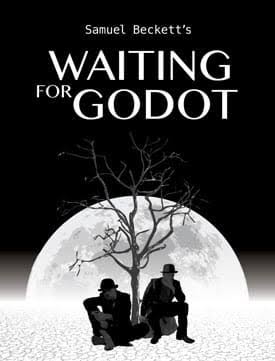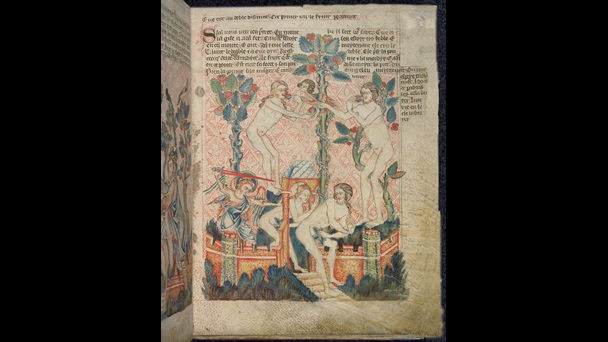Assignment
Topic : 'The White Tiger as an anti Gandhi Novel
Submitted to Department of English
MKBU
Prepared by Nishtha Makwana
M.A. Semester 4
Roll number - 15
Batch 2019-2021
Paper - The New Literature
Email id - nishthamakwana169@gmail.com
'The White Tiger as an Anti Gandhi Novel'
Content
☆ Abstract
☆ Introduction
☆ Gandhian Idea
☆ The idea of Trusteeship
☆ Adiga's the white tiger
☆ Caste based discrimination in 'The White Tiger'
☆ Corruption - Gandhi and Adiga
☆ Idea of Nonviolence and The White Tiger
☆ Women are colonized in a twofold way
Again Colonized
☆ Conclusion
☆ Work Citation and references
Abstract
》Purpose
Gandhi is known as a 'Mahatma' to the indian people and a believer of nonviolence to the whole world, but are we really following Gandhi? Is there any need for Gandhian ideas? We know that Adiga's The White Tiger somehow represents the dark side of India, but the text is not following the Gandhian idea. The purpose of this paper is to see how this text is an anti Gandhi text.
》Design/Methodology
This paper/assignment is based on Arvind Adiga's 'The White Tiger' novel and the Gandhian ideas. The research is based on various articles and web resources, it is not based on any hard copy of the book, everything is taken from online/Internet resources. In addition it is also based on 'Hind Swaraj' written by Gandhi himself. The paper/Assignment starts with Introduction, then a brief intro about Gandhian ideas, Brief intro about Adiga's 'The White Tiger' and then how this novel is an anti Gandhi novel with illustration from this novel.
》Research Questions
This paper/Assignment will follow these questions given below :-
¤ How far has the Indian society grown from Gandhi's Ideas?
¤ Does this novel an anti Gandhi novel?
》 Research Limitations
There are numerous literature and sources, we can not read everything at a time, the limitation of this paper/assignment is that it is not talking about all the ideas of Gandhi, there are excavations also about Gandhi. what Adiga's intentions were we don't know, we can just interpret it.
Introduction
Arvind Adiga's best selling and Man Booker Prize winner book 'The White Tiger' is from one of the controversial novels. It is not praising the Indian government as well as the culture of India, but it is criticizing each and everything which is happening wrong in India. Moving further, we all know that Gandhi was a freedom fighter and he believes in Truthfulness and nonviolence, but are we Indians really walking on the path created by Gandhi? And should we walk on his path? The White Tiger is a novel where we can find everything is opposite from the Gandhian ideas and the truth is we are really honest people.
India is two countries in one: an India of Light, and an India of Darkness.
~Arvind Adiga (The White Tiger)
Aptly said by Adiga, there is india of light and india of darkness, everyone wants to see the india of light but people are ignoring the dark side of india. Adiga has beautifully captured and represents the india of darkness by Balram Halwai.
"It was important to write it in the voice of a poorer, slightly unusual, but not atypical Indian to capture his voice, his humor, his anger, his sarcasm and his capacity to appreciate the beautiful things around him,"
Arvind Adiga
'The White Tiger' is a debut novel by an Indian English author, Arvind Adiga. The novel is a deep satire on politics, education, religion, business, democracy, ideas of Gandhi and Buddha.
'Gandhian Ideas'
M. K. Gandhi is known to the world for his bravery and the idea of nonviolence, but there are other things also which he believed strongly. These are like this :-
Non - Violence
Truthfulness
Equal Rights
Honesty
No corruption
Religious
Caste based discrimination etc
There are other ideas also which he believed. But we are focusing on these ideas.. Let's have a look at what his ideas were.
》Non - Violence (અહિંસા)
From fighting we get nothing rather than bloodshed and death, but with peace and nonviolence we can get many. Gandhi's idea was to take freedom without violence, if we will not be violent, there is less chance that the opposite person will be violent with you. Well nowadays this idea works or not we don't know, but from violence except bloodshed we got nothing.
》Truthfulness (સત્ય)
Gandhi strongly believed in truthfulness, if anyone lies to him he gives punishment himself rather than the person who lies to him. It is said that he was inspired by the play 'Satyavadi Raja Harishchandra'.
》Equal Rights (સમાનતા)
After facing racism and reading 'Unto the last' by Ruskin Bond he realized that everyone should be treated equally, whether the persona comes from richlass or lower class, upper caste or lower caste. Everyone should have equal rights.
》No Corruption
It is believed that he was not believing in corruption, as well as he was against this corruption everywhere.
》Caste Based Discrimination
Gandhi belonged to the upper caste, and earlier he also believed in untouchability, but after that he also realized that is wrong. He said that we should not even believe in caste based, class based, color based discrimination.
Now let's see how this novel is an anti Gandhi novel
Caste Based Discrimination in The White Tiger
India is a country of diversity, where there are numbers of religions, caste and sub caste. In addition there is Varna Vyavastha - caste system, where people are feeling untouchability from the people of lower caste. Similarly racism, but casteism is more terrible, where people even do not have any rights. In The White Tiger we can find how the caste system plays a vital role.
Balram is the main character and he is coming from a lower caste, Other people who belongs to upper caste misbehaved with him, in addition there is a character of a Driver Ramu, who is originally a muslim, but he had to hide his identity because of this discrimination. Halwai is considered a lower caste, and Balram is a halwai - a sweet maker, who is often insulted by his masters and other people also. Through his character Adiga wanted to show the brutality of Indian caste system. As we above mentioned that Gandhi was against of caste based discrimination, but in india it is merely impossible to remove this caste system. Adiga said when he was asked in one interview-
"One of the reasons the system exists as it does is that even though a lot of people realize it's bad and corrupt, too many educated, liberal, middle-class Indians work with the system,"
Again this idea is against Gandhi's idealism. Balram wanted to escape from this reality, this darkness. Rather than caste class discrimination also made him insulted. He had to kill a rich man to come out from this darkness, his work is wrong but his idea to escape from his poverty is not really bad. He said..
Corruption - Gandhi And Adiga
Gandhi's India was an imagery or we can say a dreamy India whereas Adiga's Indian is somehow the real side of India. In India corruption is everywhere, we can pick any field and there will be corruption. In 'The White Tiger' Adiga has criticized each and everything where corruption is possible. We can find these types of corruption -
Corruption in education
Corruption In Government hospitals
Corruption In politics
Corruption In business
Gandhi was totally against of corruption, especially corruption at hospitals,
"Why not? There's good money in public service! Now, imagine that I'm a doctor. I beg and borrow the money and give it to the Great Socialist, while touching his feet. He gives me the job…... I take out
Social Breakdown, Self-Interest, and Corruption ThemeTracker
The ThemeTracker below shows where, and to what degree, the theme of Social Breakdown, Self-Interest, and Corruption appears in each chapter of The White Tiger.
Idea of Nonviolence and The White Tiger
It cannot fairly be said that in Aravind Adiga’s novel, The White Tiger, the only way to escape the Darkness and advance in society is through violence, as an alternative route to the Light is presented in the story arc of Vijay, the pig herder’s son turned politician. Balram asserts that the murder of Ashok is not only the direct cause of his new wealth and status, but also the only possible trigger for his newfound social mobility.
Women are colonized in a twofold way
Anti Ambedkar idea
Women are colonized in a twofold way by imperialism and male dominance
Treated as a second class
“You need to control that wife of yours better, son. The way we do it in the village."
Again coloniz
Again Colonized
Poor people are colonized by rich people
Powerless people are colonized by the people who have power
Gandhi’s idea about સુરાજ and સ્વરાજ
Are we democratic?
Are we free?
Do
You then consider that a desire for Home Rule has been created
among us?
(Hind Swaraj)
Work Cited
♧Adiga, Aravind. The White Tiger. HarperCollins, 2008.
♧ Gandhi, M. K. Hind Swaraj or Indian Home Rule. Pdf file, Jitendra T. Desai Ahmedabad 380 014 (India), 1909.
♧ Kesavulu, Y. "Gandhian Trusteeship As an 'Instrument of Human Dignity'." MAHATMA GANDHI ONE SPOT COMPLETE INFORMATION WEBSITE, 2004, www.mkgandhi.org/articles/trusteeship.htm. Accessed 24 Apr. 2021.
♧ Pratap, Abhijeet. "Gandhi’s Notion of Trusteeship in Adiga’s The White Tiger." Notesmatic, 20 July 2016, notesmatic.com/2016/07/201607gandhis-notion-of-trusteeship-in-adigas-the-white-tiger/. Accessed 24 Apr. 2021.
Simon, S., & Adiga, A. (2008, May 17). In White Tiger, Killer Exploits India's Caste System. NPR. https://www.npr.org/templates/story/story.php?storyId=90452769.
"Social Breakdown, Self-Interest, and Corruption Theme in The White Tiger." LitCharts, www.litcharts.com/lit/the-white-tiger/themes/social-breakdown-self-interest-and-corruption.
"The Role Of Violence In The White Tiger By Aravind Adiga." Homework Help and Textbook Solutions | Bartleby, www.bartleby.com/essay/The-Role-Of-Violence-In-The-White-PJCDXCB5U6.








0 Comments